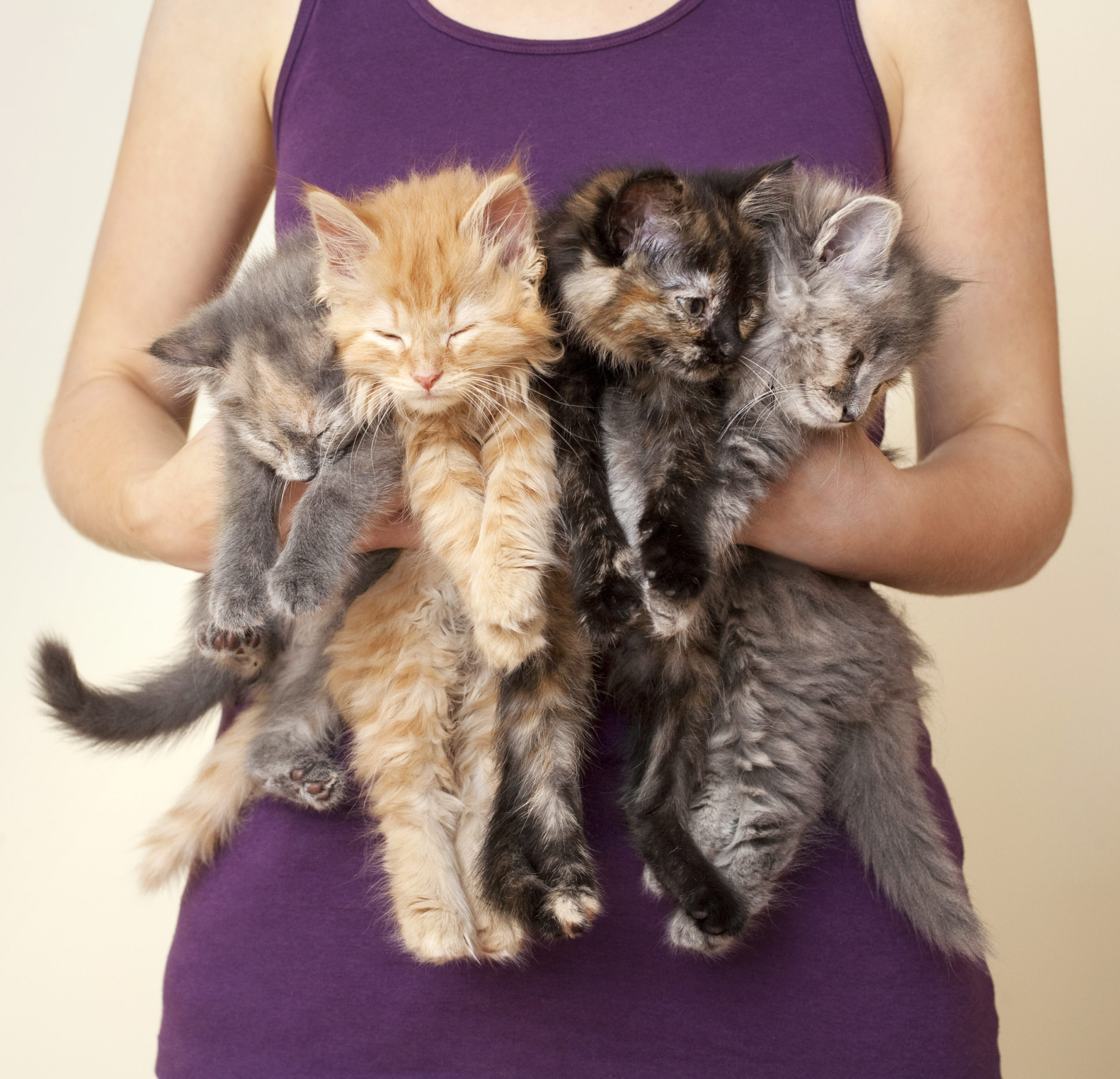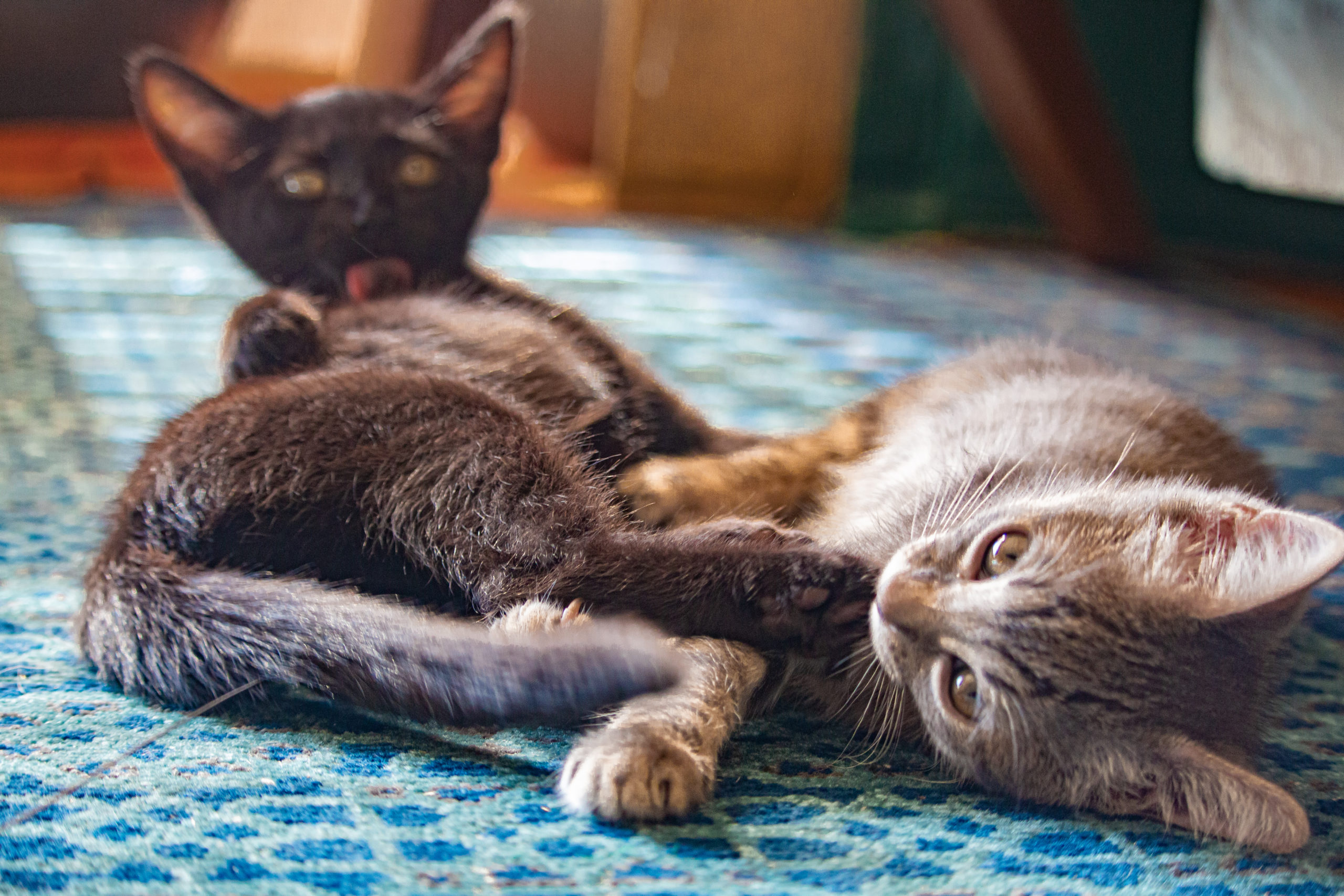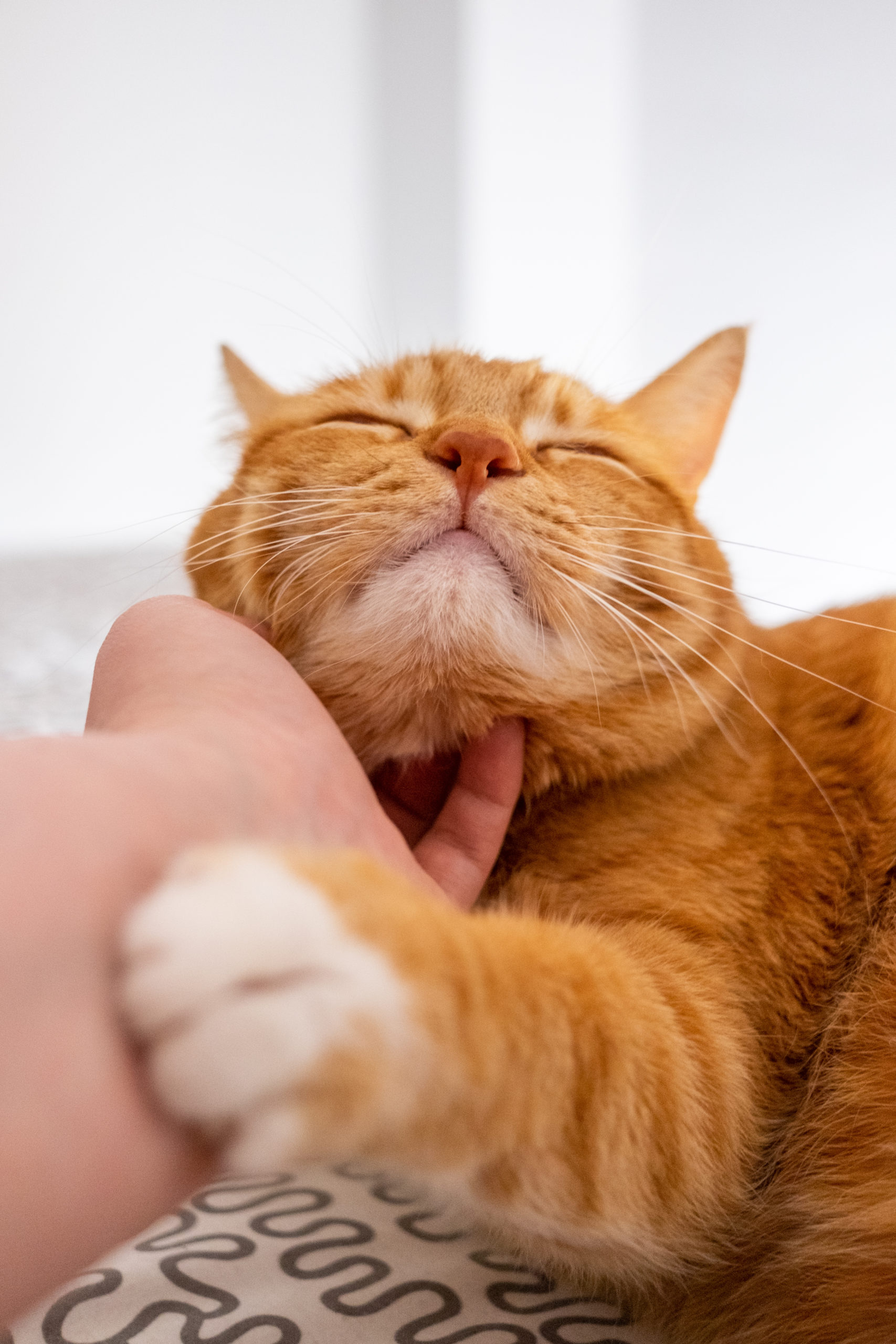
“Should I keep my foster cat or continue fostering?”
If you’re reading this article, chances are you’re asking yourself this question. And you’re not alone. This is a question that most foster caregivers ask themselves at one point or another.
Whether it’s your first time fostering or your fiftieth time, sometimes a cat sneaks their way right into your heart more than usual and you can’t imagine life without them.
Or maybe you have friends and family in your ear, nudging you to keep your foster cat. Typically it goes something like this: They see how cute a foster kitten is, they see how much the kitten loves you and how much you love the kitten, and they start saying things like, “You are definitely keeping that cat. How could you give them up?!” Who wouldn’t start to second-guess themselves when that happens?
We can’t tell you there’s a “right” or “wrong” answer to the question of whether or not to adopt your foster cat, because in the end it is a personal decision and one that you make with the organization you are fostering for. But we can tell you that your choice will impact your overall ability to be a foster parent in the future.
There are a lot of reasons you might think about keeping your foster cat, but there are also a lot of good reasons why, if you’re on the fence, you should pause and remember the crucial role fostering plays in saving lives.
Fosters are Lifesaving Heroes
It’s estimated that up to 1.5 million animals are euthanized annually in shelters across the nation, down from 2.6 million in 2011. A big reason that number is down is because more and more foster families have opened their homes to animals in need! Think about all the lives that are saved and the networks that are created by foster programs throughout the country. Foster caregivers make a BIG impact, and really are life saving heroes.
But 1.5 million is still a big number, and it will only get smaller if we keep doing what works. Fostering is an essential part of local and national life saving efforts. And as a foster parent, you play a direct role in a shelter’s ability to save more lives each year.


Fosters Are a Valuable Resource
You are a renewable resource! And we want to encourage you to lean towards fostering again and again! The life saving space you have in your home for a foster cat, and your gifts of love, time, and energy, are what allow you to be an ongoing resource for your shelter or rescue.
When a foster cat comes into your home you have made a space at the shelter for another cat in need. You provide your foster cat with love and care; you prepare them for adoption; and then you help transition them to a wonderful new forever home with an adopter. It’s that last part that allows you to be a renewable resource. It opens up the life saving space in your home, and gives you more space in your heart, for another foster cat. If you adopt your foster cat instead of staying a foster parent, an important resource for the shelter might disappear.
Be Wary of Outside Pressure
Other people, whether online or in person, may “pressure” you to keep your foster cat. People who encourage you to keep your foster cat mean well, but their encouragement can sometimes complicate your feelings about your foster cat and maybe even weaken your resolve to focus on the goal. You might hear things like, “Oh he loves YOU so much, you have to keep him!” But here’s the thing: No, you don’t have to keep him. And the goal of fostering is that you don’t.
You can absolutely be sad, you may even cry when you say goodbye, but sending a foster cat to an adoptive home should be a happy celebration too! Nothing outweighs the joy of knowing you helped save a life (or a whole litter of lives), and because you got your foster cat to an adoptive home, you can now foster another cat in need! Focus on and share the happiness with others so those who might encourage you to keep every foster cat can learn more about why you foster and support your efforts.
You may decide to adopt your foster cat, but only you can decide if that’s what you want. No one will be upset if you do, but others should not pressure you or impact your decision.
Feeling Attached and Conflicted?
It’s one of the harder parts of fostering: navigating the complex feelings that can develop as you’re caring for your foster cat while at the same time preparing to let them go when it’s time.
As a foster parent, it’s your job to help your foster cat feel safe and loved, and to help them build bonds with humans. There will inevitably be times when a foster cat gets attached to you, or you get especially attached to them (or both). While it can be hard to see when you’re in the middle of it, your foster cat will love another person, too. And another person will love your foster cat as much as you do.
You will always be a special part of your foster cat’s life! You are the one who helped them through a challenging period in their lives on the way to their forever home. It can feel sad in the moment, but your selfless efforts will make a happy new life possible for your foster cat and their adoptive parent.

Understanding Your Boundaries

As a foster parent, you’ll want to determine, set, and honor your own boundaries and limits for your space and your time so that you can be a valuable foster caregiver for the long haul. It doesn’t help anyone, especially not you, if you burn out or experience compassion fatigue.
Think carefully about your intentions for fostering, your limits, your own pets, and all of the other cats you will have room to save if you don’t keep a particular foster cat.
If you decide that your long-term goal is to be a valuable member of a foster team, you will be the bridge to a forever home that so many cats need. To do this successfully, you really need to try to commit to saying goodbye to your foster cats. It can be hard, but it’s good to go into fostering knowing that you can’t keep them all. You may indeed end up keeping one or two over time, but always keep in mind your balance.
“Does it have to be either/or?”

If you have the time, energy, space, and financial resources to adopt a particular foster cat and to keep fostering, that’s great! Many of us have done both: adopted a foster cat and continued fostering. But keep in mind that adding another permanent cat to your home changes the dynamics of both your home and your fostering.
Think about the space it takes to foster, the members of your household, your own existing pets, your resources, and how many total pets you’re comfortable committing to caring for while still fostering. Also think about how you want to help your community, what it takes for you to maintain balance in your fostering work, and what brings you and your household joy and purpose.
If You Decide You Want to Keep Your Foster Cat
You’ll want to communicate with the shelter or rescue as soon as you have made the decision to adopt your foster cat. Realize that some organizations have very limited resources, and managing a foster program takes time, funding, and a lot of paperwork. Make a conscious effort to avoid using staff’s very limited time following up with you as a foster parent when you’ve already decided you want to adopt instead. Be responsive and proactive!
It’s important to note that since your foster cat belongs to the organization you’re fostering for, you will need to follow their normal adoption process. If you are approved to adopt the cat, you’ll then finalize the adoption paperwork.
And remember, you’ll probably be hooked on being a life-saving hero for cats in need, so remember to think about if you’ll still have the ability to be a foster home if you adopt your foster cat. And be sure to let the organization know that they can count on you again to save lives!


